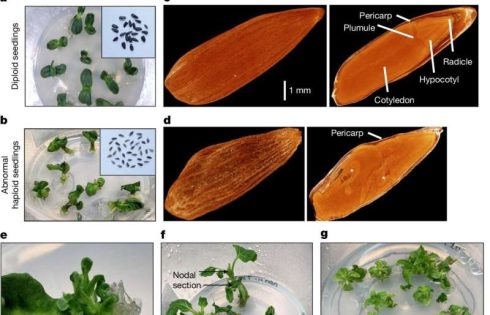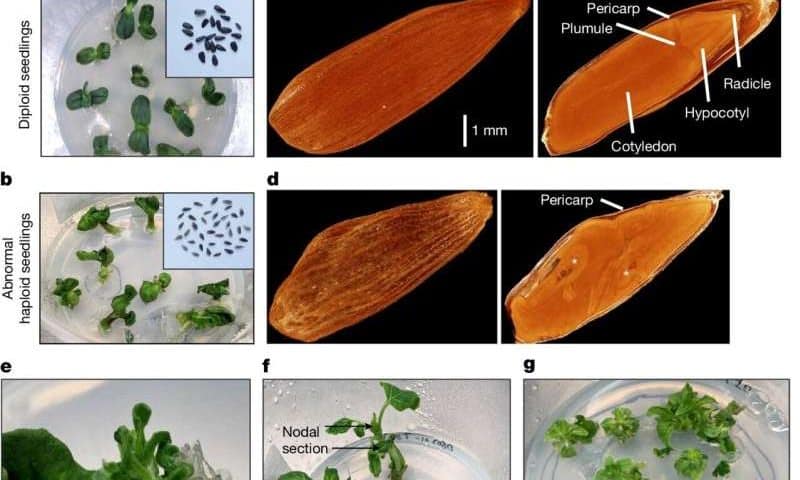
Syngenta Biotechnology China-led research, with partners in the U.S., France, the UK, Chile, the Netherlands, Argentina, and across China, has discovered that sunflowers can form viable haploid seeds through parthenogenesis in the absence of pollination. This discovery opens the possibility of a scalable doubled haploid system in sunflowers, a technique that could reduce the time needed to produce fully inbred lines from six years to ~10 months.
Some animals, including certain birds, reptiles, fish, and crustaceans like Daphnia, can reproduce without fertilization through a process known as facultative parthenogenesis. In these species, females can produce offspring without male involvement. Charles Darwin first documented unusual reproductive patterns in plants, but many aspects of plant reproduction remain poorly understood.
In most flowering plants, seed formation depends on a process called double fertilization. This involves one sperm fertilizing the egg and another fertilizing a separate cell that forms the endosperm, a tissue that nourishes the embryo. Without fertilization, viable seeds rarely develop.
Sunflower is one of the world’s most important oilseed crops, producing nearly 55 million metric tons globally in 2023. Because sunflower is a hybrid crop, improving its traits requires creating inbred parent lines, which typically takes six years through repeated self-pollination.
In the study, “Haploid facultative parthenogenesis in sunflower sexual reproduction,” published in Nature, researchers examined how sunflowers can form haploid seeds without fertilization. The team conducted a combination of genetic, chemical, and environmental experiments to identify the factors that enable parthenogenesis and support a scalable doubled haploid breeding system.
Researchers tested sunflower plants under controlled greenhouse, growth chamber, and field conditions to identify genetic backgrounds capable of producing haploid seeds without fertilization.
Experiments included chemical treatments, manual and hormonal suppression of pollen, and variation in environmental factors such as light intensity and temperature. Flow cytometry and genetic analysis confirmed haploid seed formation. Tissue culture and chromosome doubling techniques were applied to regenerate fertile, doubled haploid plants.
Formation of haploid seeds was first noticed during experiments using a chemical phospholipase inhibitor on pollen. Researchers observed small, shriveled seeds and initially attributed them to the chemical’s effects. Later trials showed the same seeds forming even in the complete absence of pollen, leading to the discovery of spontaneous parthenogenesis.
Genetic analysis confirmed the seeds were maternally derived and lacked paternal DNA. Parthenogenesis occurred across multiple sunflower lines, with some producing over 100 haploid seeds per flower head. High-intensity light significantly increased haploid yield, while blue or red light alone had no effect.
Maize pollen combined with boron improved haploid formation in certain genetic backgrounds. Germination trials showed a 40% success rate in soil.
Imaging showed that many haploid embryos which formed without fertilization had irregular shapes or multiple axis-like centers. Each seed still contained a single embryo, but some developed multiple shoot-like structures after germination. Tissue culture was used in regenerating healthy seedlings from these atypical forms.
Chromosome doubling produced fertile, seed-setting plants, with some individuals generating up to 188 seeds.
Unlike most flowering plants, sunflower embryos survived and germinated using nutrient reserves stored in the cotyledons, bypassing the usual requirement for endosperm development. This bypass of the endosperm requirement is highly unusual.
Discovery of parthenogenesis in sunflower introduces a previously unrecognized reproductive pathway in a major global crop. Researchers demonstrated that haploid seeds can develop without fertilization and be converted into fully fertile plants, offering a faster route to inbred line development.
The results provide a foundation for a scalable doubled haploid breeding system in sunflower, with the potential to accelerate crop improvement and expand global breeding capabilities.

